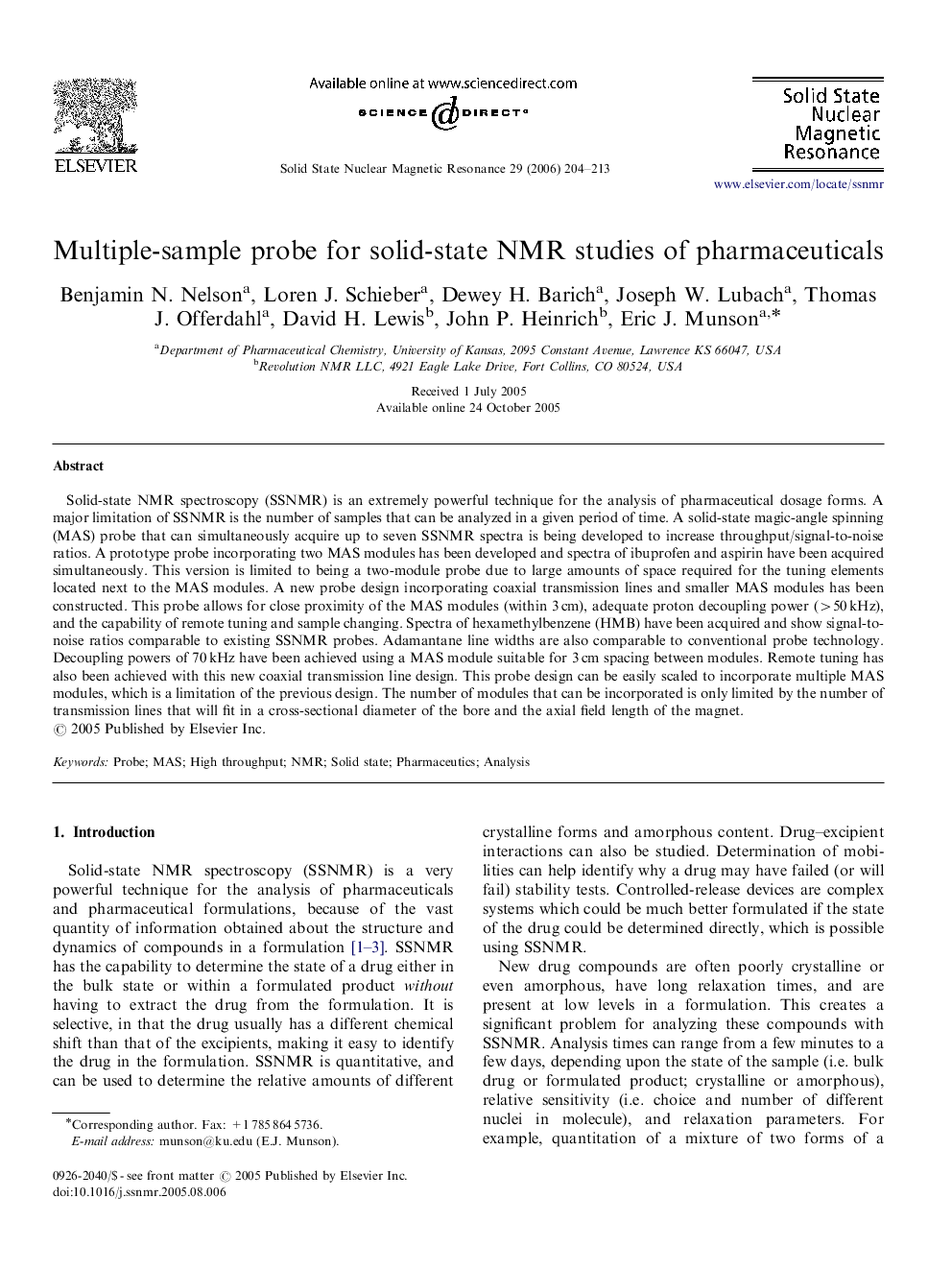| Article ID | Journal | Published Year | Pages | File Type |
|---|---|---|---|---|
| 5420992 | Solid State Nuclear Magnetic Resonance | 2006 | 10 Pages |
Abstract
Solid-state NMR spectroscopy (SSNMR) is an extremely powerful technique for the analysis of pharmaceutical dosage forms. A major limitation of SSNMR is the number of samples that can be analyzed in a given period of time. A solid-state magic-angle spinning (MAS) probe that can simultaneously acquire up to seven SSNMR spectra is being developed to increase throughput/signal-to-noise ratios. A prototype probe incorporating two MAS modules has been developed and spectra of ibuprofen and aspirin have been acquired simultaneously. This version is limited to being a two-module probe due to large amounts of space required for the tuning elements located next to the MAS modules. A new probe design incorporating coaxial transmission lines and smaller MAS modules has been constructed. This probe allows for close proximity of the MAS modules (within 3Â cm), adequate proton decoupling power (>50Â kHz), and the capability of remote tuning and sample changing. Spectra of hexamethylbenzene (HMB) have been acquired and show signal-to-noise ratios comparable to existing SSNMR probes. Adamantane line widths are also comparable to conventional probe technology. Decoupling powers of 70Â kHz have been achieved using a MAS module suitable for 3Â cm spacing between modules. Remote tuning has also been achieved with this new coaxial transmission line design. This probe design can be easily scaled to incorporate multiple MAS modules, which is a limitation of the previous design. The number of modules that can be incorporated is only limited by the number of transmission lines that will fit in a cross-sectional diameter of the bore and the axial field length of the magnet.
Related Topics
Physical Sciences and Engineering
Chemistry
Physical and Theoretical Chemistry
Authors
Benjamin N. Nelson, Loren J. Schieber, Dewey H. Barich, Joseph W. Lubach, Thomas J. Offerdahl, David H. Lewis, John P. Heinrich, Eric J. Munson,
